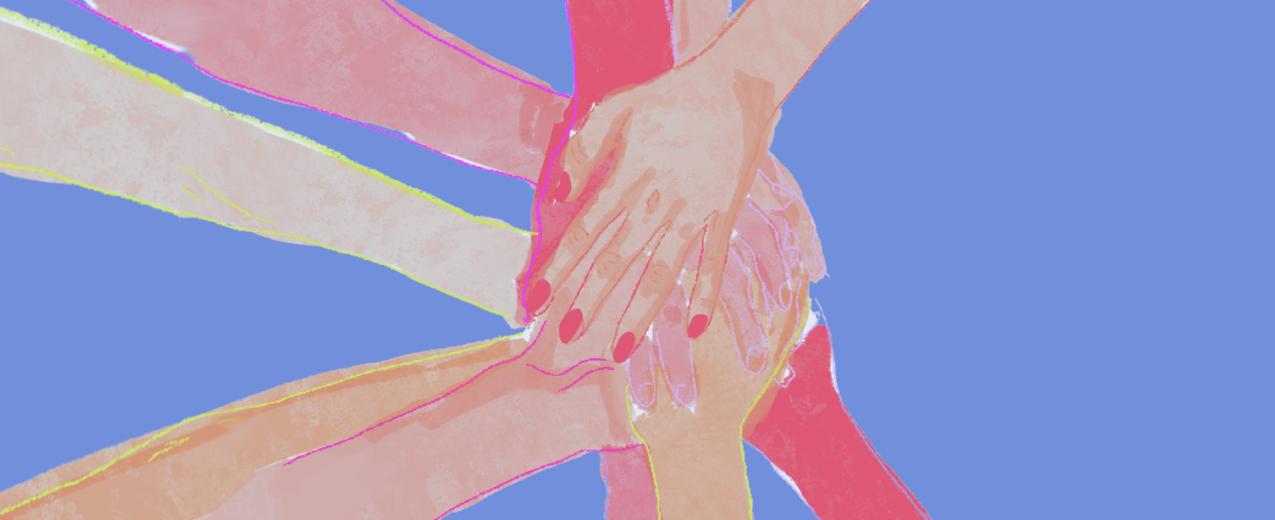
- Case study
- 1 November 2021
Training journalists in gender-sensitive reporting: Sahiyo
- Author: Faria A. Nasruddin
- Published by: ALIGN
Sahiyo, which means ‘female friend’ in Bohra Gujerati, is a transnational non-governmental organization that combats female genital cutting (FGC) in the Dawoodi Bohra community and other communities across Asia where FGC is still practiced. Sahiyo works to create positive social change and achieve a world that is free of FGC, where women and girls have the right to control over than what happens to their own bodies, and where female sexuality is normalised, not suppressed.
Theory of change
Sahiyo understands FGC to be a social norm. Its theory of change, therefore, aims to develop a critical mass of voices willing to speak out against a social norm that is particularly harmful. According to Mariya Taher, one of the founders of the organisation, it is possible to shift norms if even just 25% of the people in a community speak out to spark change. That is why Sahiyo engages primarily with members of the Dawoodi Bohra community, survivors of FGC, and others who have a role to play in ending FGC, such as healthcare providers, social workers, law enforcement, and media professionals.
Sahiyo focuses on building a critical mass through storytelling, starting with digital workshops to show participants how to share their stories. Traditional media, Sahiyo has found, tends to have an ‘angle’ or looks for ‘soundbites’ when reporting on FGC and does not put survivors, their voices, and stories front and centre. The first group of survivors that participated in Sahiyo’s digital storytelling workshops had spoken to reporters in the past, but said that they felt limited in what they could share. One survivor, for example, spoke of how she wanted to break the silence on the various impacts that FGC has on all aspects of survivors’ lives, including their relationships with their mothers, the backlash against those who advocate to end FGC, or the place of male allies in speaking out against this harmful and gendered social norm. According to Taher, ‘those are stories that don’t always come out in traditional media’.
Methods
Sahiyo takes a dual approach: working with traditional broadcasters to improve journalistic practices and giving survivors the opportunity to share their stories in the digital space and on social media. Since its inception in 2015, Sahiyo has worked with journalists to ensure that media reporting on FGC is ethical: is not sensationalised, is culturally- and gender-sensitive, and will not retraumatise survivors.
Working with the media
A media toolkit is now circulated online to encourage reporters to think about terminology and images related to FGC. For example, the toolkit begins with an explanation on why the term ‘mutilation’ can be alienating for the Bohra community: ‘We also recognise that the word, 'mutilation' implies an ‘intent’ to harm, and in this practice, often, mothers are not intending to harm their daughters’, the media kit explains. ‘Cutting’ is seen as a more neutral term when referring to the act of FGC. That being said, reporters are also urged to mirror the language that their interviewees use, in order to show respect for them and for their communities.
The combination of the toolkit and workshops for media are helping to build the necessary critical mass through both sensitive and accurate education. For example, Sahiyo conducted a training workshop for journalists in India in 2016, at a time when FGC was a trending topic in the news media. At that time, ‘stories were being conflated’, says Taher, even though FGC is a varied practice, and the images that appeared in articles were often highly graphic. One image of a Malaysian girl being cut was circulated frequently by the Indian media to illustrate articles on FGC within India. Images such as this ‘aid stereotypes and myths about how FGC occurs and where it occurs’, as Taher explains. One stereotype that perpetuated as a result is that FGC only occurs in unhygienic settings when, in reality, it also occurs in healthcare or medical settings (although it does not make the practice any more acceptable).
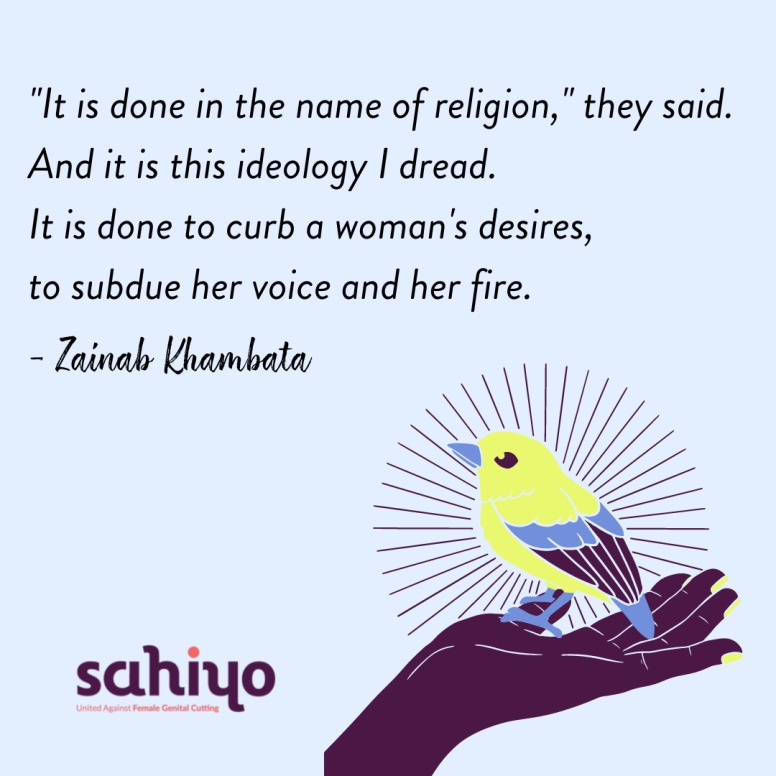
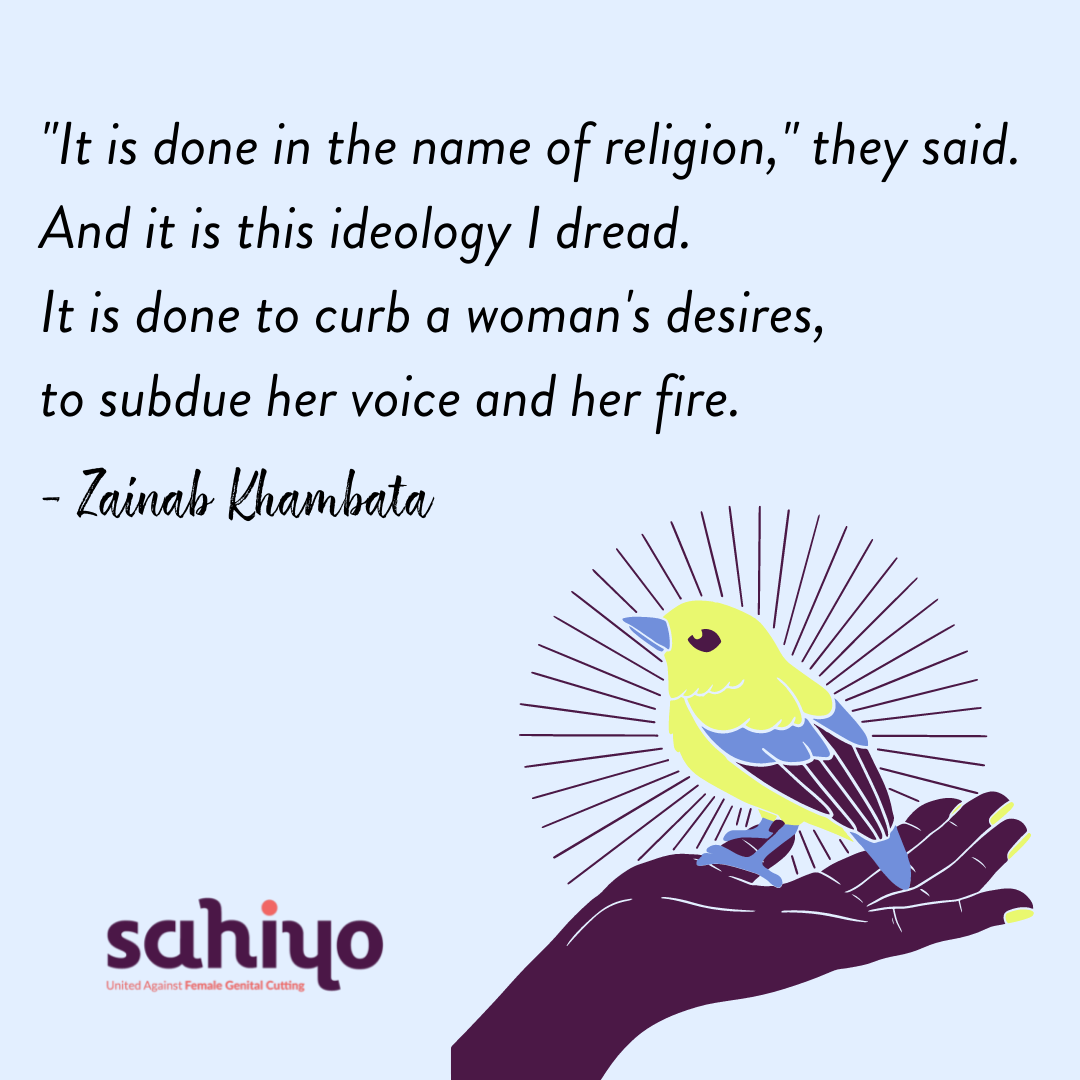
Working with survivors
As part of its work on digital media, Sahiyo’s blog and digital storytelling workshops give FGC survivors around the world the chance to, ‘share their stories about the impact of FGMC in the words that they are comfortable with or in ways that they are comfortable with’, as Taher explains. This project, Voices to End FGM/C, works to expand the reach of Sahiyo and develop the critical mass that is needed to break the taboos around FGC. Voices to End FGM/C has the added benefit of creating a community and a support network for survivors and advocates, which is speeding up and amplifying the public discussion at which survivors begin to speak out and make FGC a public discussion.
Evidence of change
In 2020-2021, Sahiyo has supported the creation of 11 new stories as part of its Voices to End FGM/C campaign, a fall from the 27 new stories created in 2019–2020. However, the percentage of workshop participants willing to stay involved with Sahiyo as ambassadors or volunteers increased from 78% to 95% -- evidence that supports a theory of change based on building a critical mass. Taher also notes that she has seen a growing number of people willing to be an advocate on this issue over the years.
As for broadcast media, Sahiyo has found that journalists have modified their practices after using the media toolkits. Other journalists who contact the organization are referred to the toolkit, including more ‘ultra-conservative’ reporters, and some go on to use it. Some have had no idea about the impact of FGC, and, as Taher says ‘We’ll see afterward how they changed their article.’
Looking to the future
Although Sahiyo begin with a relatively small scope – combatting FGC in the Dawoodi Bohra community – it has since expanded to include other communities within Asia and Asian diaspora communities worldwide. In addition, Sahiyo has expanded to include audiences beyond survivor-advocates, including male allies or stories from girls who have not been cut to highlight the pressure and shame that comes with not being cut and how they dealt with these challenges. These stories are also vital to build critical mass as they demonstrate the wide impact of FGC not only on survivors but also on the rest of the social community and how this impact can be addressed.
Coverage of FGC by African and Asian media has fallen since the start of the COVID-19 pandemic, according to a report by the Orchid Project. However, Sahiyo hopes to work with journalists with whom they have long-standing partnerships to revive and sustain sensitive and accurate reporting on FGC.
Finally, Sahiyo has been discussing intersectionality within FGC, specifically the underlying racism in stereotypes about where and in which communities FGC occurs. For example, while FGC is stereotyped in Western media as occurring only in Brown and Black communities, specifically Muslim communities, Sahiyo is initiating discussions about clitoral plastic surgeries in European or white communities, particularly when girls who might be not old enough to consent to these or understand what is going on with their bodies undergo these surgeries. By opening up debate on such issues, Sahiyo aims to address the complexity and layers of FGC in new ways.
- Tags:
- Broadcast media, Media
- Countries / Regions:
- South Asia
More case studies
Interview
15 December 2021
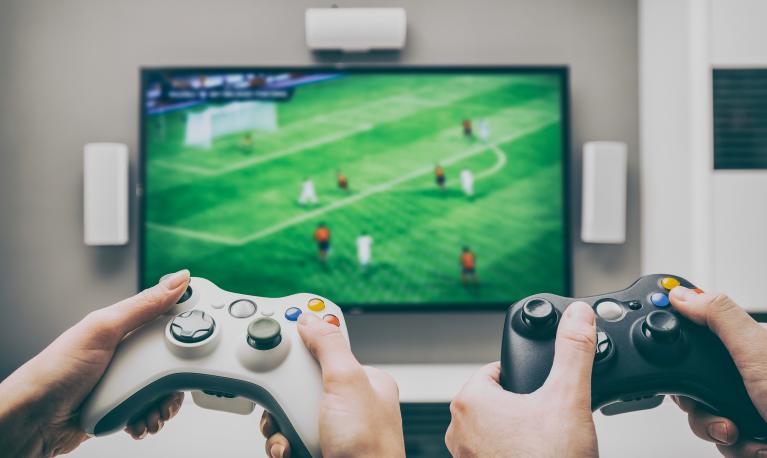
Interview
6 December 2021

Case study
1 November 2021
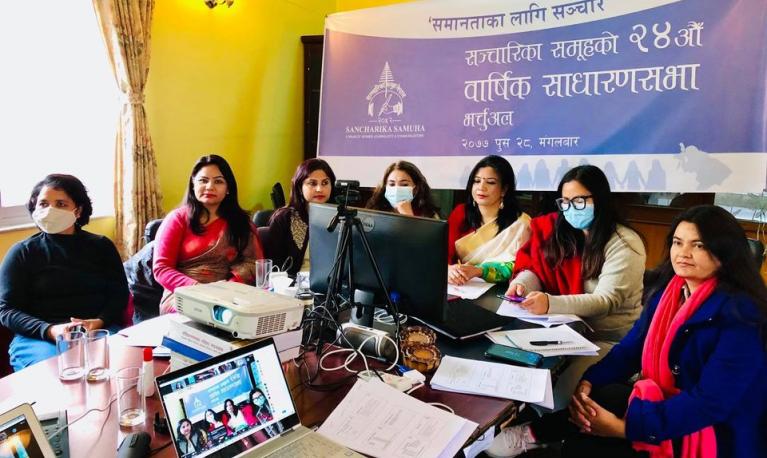
Case study
29 October 2021

Case study
29 October 2021

Case study
29 October 2021

Case study
29 October 2021

